Welcome to the second half of my reflection on three years after international adoption. If you haven’t already, read Part 1 here. There I talked about medical needs, developmental milestones, and education since adopting from China. Read on for several other aspects of life post-adoption.
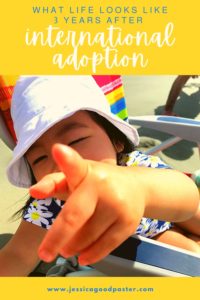
Pin me!
Food and Drink
Food is often a source of anxiety for internationally adopted kids, and that was no exception for L. While she still eats more than my eight-year-old son each day, she has made great strides in her ability to wait for regular meals and snack time. She usually asks before bed if she’ll have oatmeal for breakfast and requests particular snack favorites as soon as she gets up from naps. But I don’t feel like food completely controls her life the way it used to.
Also, she is drinking more liquids and very recently learned to drink from an open cup. Now if we could just get her to chew with her mouth closed, we would be set!
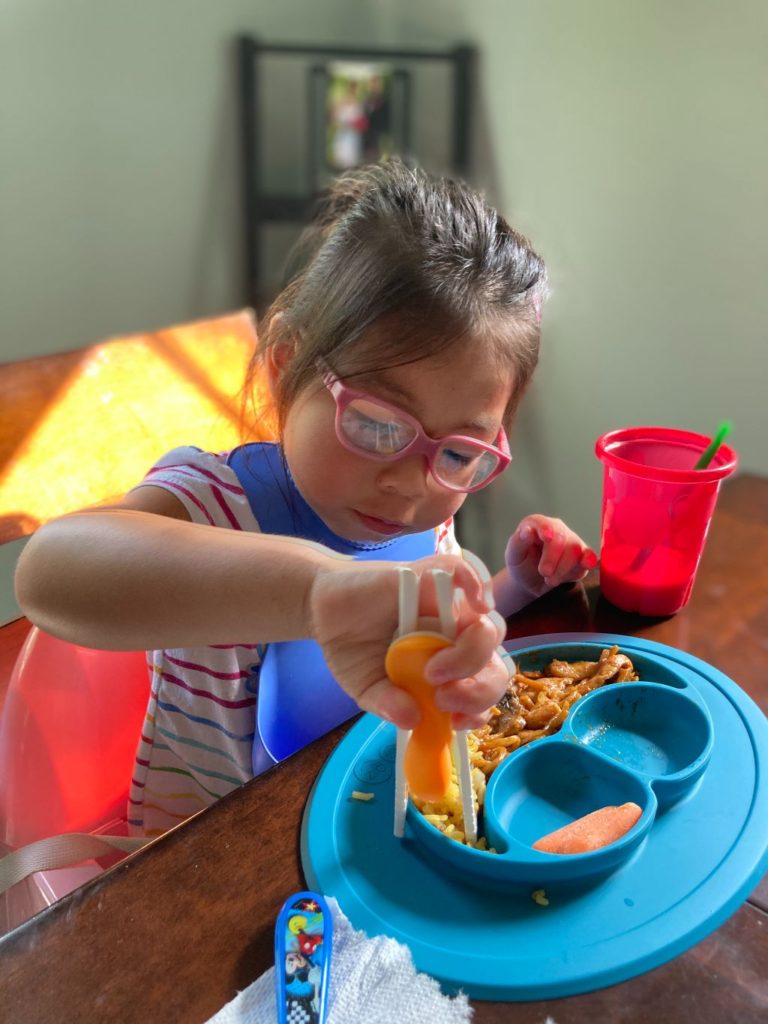
Using the trainer chopsticks I purchased in China.
Attachment and Trauma in International Adoption
Attachment issues and disorders are common among internationally adopted children. We feel very fortunate that L seems to be strongly attached to us and vice versa. (Read about some of the things we did early on to foster a bond here.) She is sometimes overly friendly to other people, invading personal space (which is particularly not the best during social distancing). We aren’t sure if that is her personality or somehow connected to attachment, but we are working on appropriate boundaries.
Trauma manifests itself in various ways in the lives of children from hard places. Though adoption is beautiful and I hear all the time how “lucky” L is to have us, the truth is that great loss occurred for her to be in our home. (I talked about this more here.) The mere fact that she isn’t being raised by her biological parents is trauma, not to mention the first 18 months of her life spent in an orphanage and being flown across the world to live with people she had never met.
Though she will not have concrete memories of any of those things, the effects will live on in her subconscious for years to come. (Read more about the impact of trauma on adopted children at The Post Institute.) For our daughter, many of the more obvious signs have subsided in the past three years. Her pain response is more typical, she asks her parents for help in new/scary situations, and night terrors occur less often.
But in times of stress and uncertainty, we still witness the “fight or flight” instinct kick in quickly. Her defenses put her on high alert and make her more anxious about food, schedules, sleep, and anything she feels is out of her control. We will continue to love and support her through these times, making sure that we make her feel safe and loved.
We made a few major breakthroughs in the past year. One was sleeping at someone else’s house. Mine and Nathan’s 10th wedding anniversary was in April and we planned to go away for a long weekend to celebrate. Though coronavirus cancelled our plans, we were thrilled that L successfully slept at her grandparents’ house a few times before everything shut down.
Every year around her birthday and adoption date, we see distinct regressions in behavior, skills, and sleep patterns. I discovered that this is no coincidence and that traumaversaries are common among internationally adopted kids. Basically, their body remembers a traumatic event reacts to the grief. We see this and have heard anecdotal stories like this from other adoptive parents. Read more about this fascinating phenomenon here.
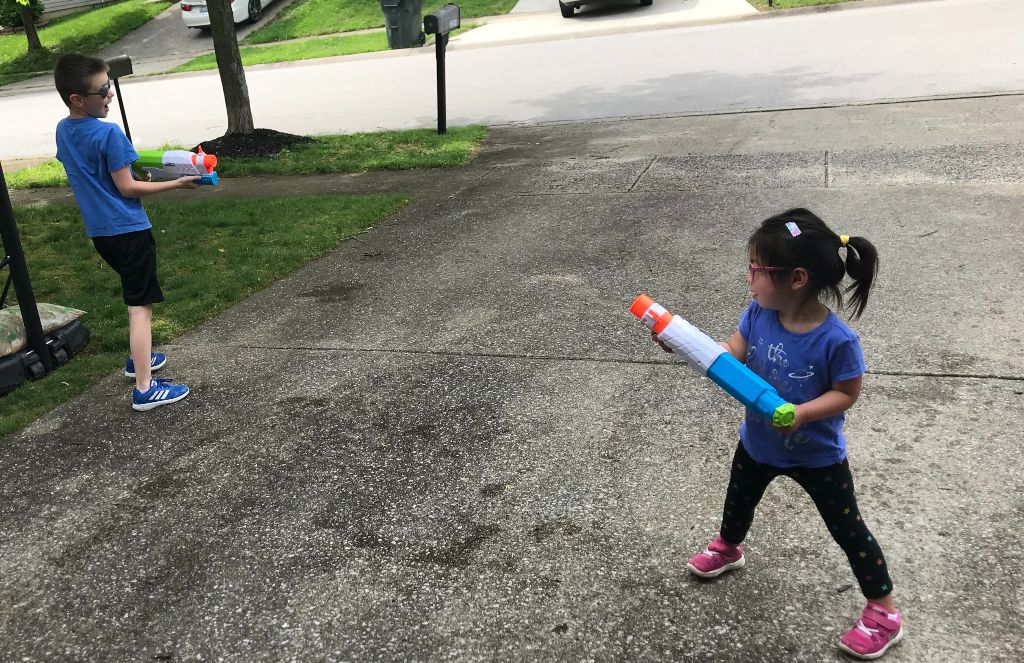
Attachment has gone well in our family. As you can see, they act like typical siblings!
Life and Family After International Adoption
Most days, our life resembles what I imagine most families with two kids to look like. Our kids squabble and make up. We step on small toys in the floor that didn’t make it back to their assigned place. It takes a color-coded schedule to keep up with everyone’s activities. Then we read bedtime stories, say prayers, and tuck the kids in bed in hopes that Mom and Dad can watch tv together on the couch. International adoption doesn’t really play a noticeable role in our day-to-day life other than being how our daughter joined the family.
Of course, there are some developmental delays and lingering effects of trauma that we are still working on. But with a quick glance, our routines might not look much different than our peers. Nathan and I frequently muse to one another how far L has come and the things we are now able to do as a family that we couldn’t manage a couple of years ago. That is, until March 2020 rolled around.
COVID-19 certainly rocked everyone’s world and brought our family’s activities to a screeching halt. No school, church, therapies, visits with family, trips to Costco, library story times, play dates, or vacations. Though both kids managed the massive changes better than I imagined, I worry about the long-term implications of pulling back all the things we worked so hard to achieve with L. (Read my thoughts on why quarantine is hard on special needs and adoptive parents here.)
Thankfully, we’ve been able to add teletherapy visits for PT, OT, and speech. For the summer, we settled into a decent rhythm with all of us at home. Now virtual preschool and elementary school are in full swing. Though it isn’t the same as in-person classes, I’m happy my kids can learn while staying healthy. They have both done a phenomenal job of rolling with the punches 2020 has thrown our way, something I don’t think I would have been able to say about L a year or two ago.
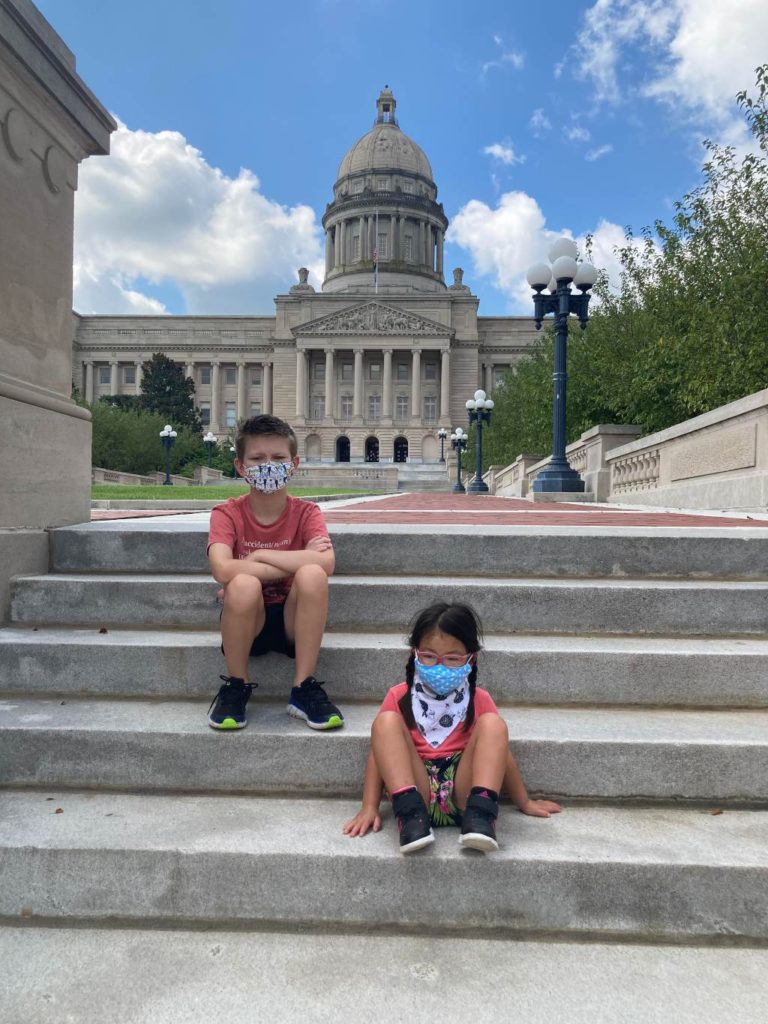
COVID-19 has certainly shaped 2020. This photo of the kids made it on TV with the governor during his press conference after wearing masks at the KY Capitol.
Navigating Transracial Adoption
One of the things I am becoming more and more aware of is the responsibility I have to ensure my daughter has a connection to her birth country. As white parents in America, we can’t possibly provide her with the same cultural experience she would have had growing up in China. But we are trying to learn and incorporate new traditions into our family.
For example, we now celebrate the Lunar New Year. I attempt to make more Chinese meals. We added stories from China to our library, watch movies set there, and make sure that she has dolls that look like her.
I also joined a group for transracial adoptive parents that includes perspectives of adult adoptees. Though it takes me out of my comfort zone at times, it is important to hear stories from people outside my circle. We do a disservice to our daughter if we attempt to raise her with only white voices. Our whole family benefits from listening and learning from others.
One of the things I need to be more intentional about is making sure my daughter has Chinese role models in her life. We live in a fairly diverse neighborhood and her school has kids and teachers of many different ethnicities. But there are not many Chinese people in our network except for other adoptees. My goal is to find ways to change this, especially as she gets older. I want authentic relationships for my entire family.
I didn’t know that transracial was a word before I pursued adoption. Honestly, I didn’t give it as much thought as I should have. Though being a Goodpaster will give her family roots that I hope she’s proud of, it’s also important to acknowledge and celebrate her origins.
I recently talked about this and other aspects of adopting from China as a guest author at For the Love of Adoption. Read 5 Things You Should Know About International Adoption here.
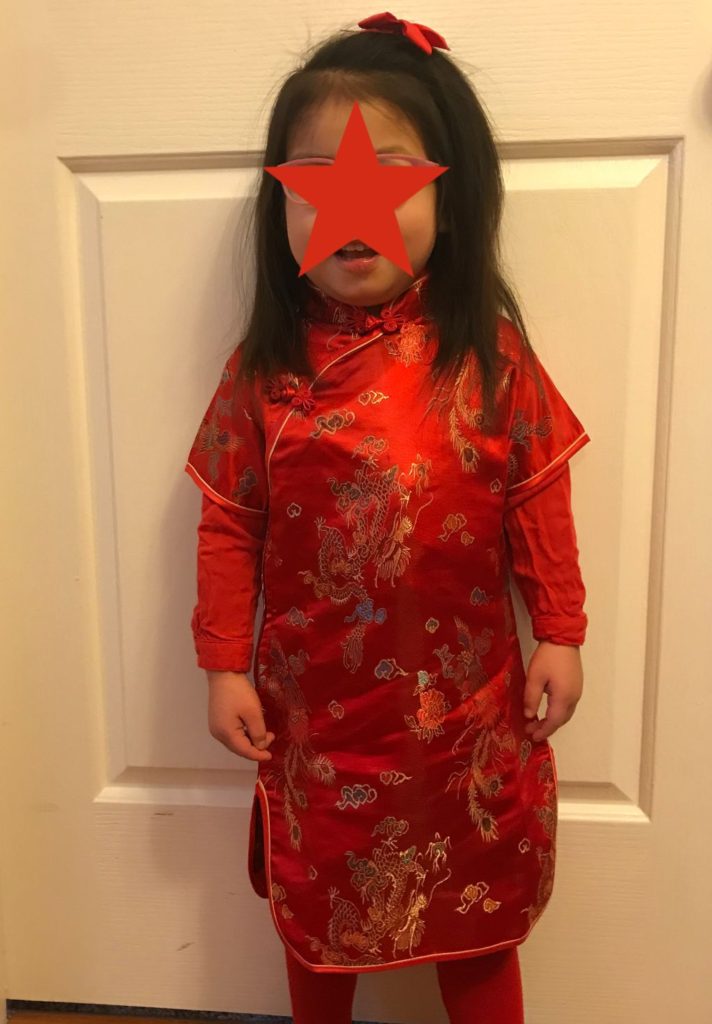
We celebrate the Lunar New Year, just one of our efforts to live well as a transracial family.
Parenting on Faith
As I mentioned in the one-year recap, and likely will in any subsequent discussions on parenting, nothing has grown my faith more than having kids. International adoption is definitely no exception. I naively thought coming up with the money to adopt would be the biggest leap of faith, or maybe the big international trip. But raising children is a continual object lesson on how to trust God.
Nathan and I are responsible for developing our kids into kind, trustworthy, functioning adults. Though we can do our best to mold them and point them in what we believe to be the right direction, we have no real control on how their lives turn out. This is especially true in adoption because we don’t know the beginning of the story and how it affects the future.
But God does.
Every day, I put my kids’ lives in his mighty hands. And thank goodness that is the case! I don’t need all the answers or even all the questions. He equips me with exactly what I need for the stage of parenting I’m in. I know this must be true because people often describe me as patient and calm with stressful kid-related situations. Let me tell you, if accurate, that is an absolute miracle! My natural demeanor is impatient and prone to frustration.
I am so thankful to have faith that my Creator has good for me and my family. It means I don’t have to know everything or make every right decision. He has a plan that simply requires me to trust and follow his lead.
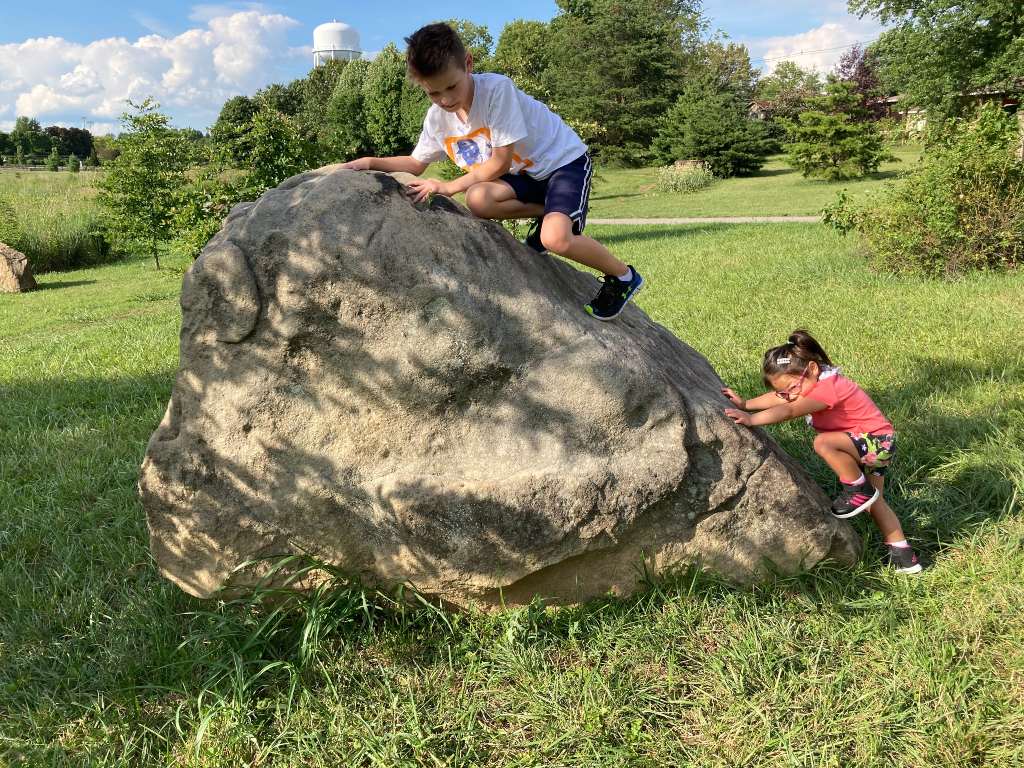
Parenting requires a lot of faith no matter how the kids enter the family.
Three years in, I am still not an expert on every aspect of international adoption parenting. But I can say that we have come a long way. If have questions about the process or our experience thus far, please feel free to contact me.
Get 101 Adoption Fundraising Ideas Today!
Need creative ideas to fund for your adoption? My free list of 101 Adoption Fundraising Ideas has something for everyone! From unique ideas to events to virtual fundraisers, you'll find the perfect fit for your family.
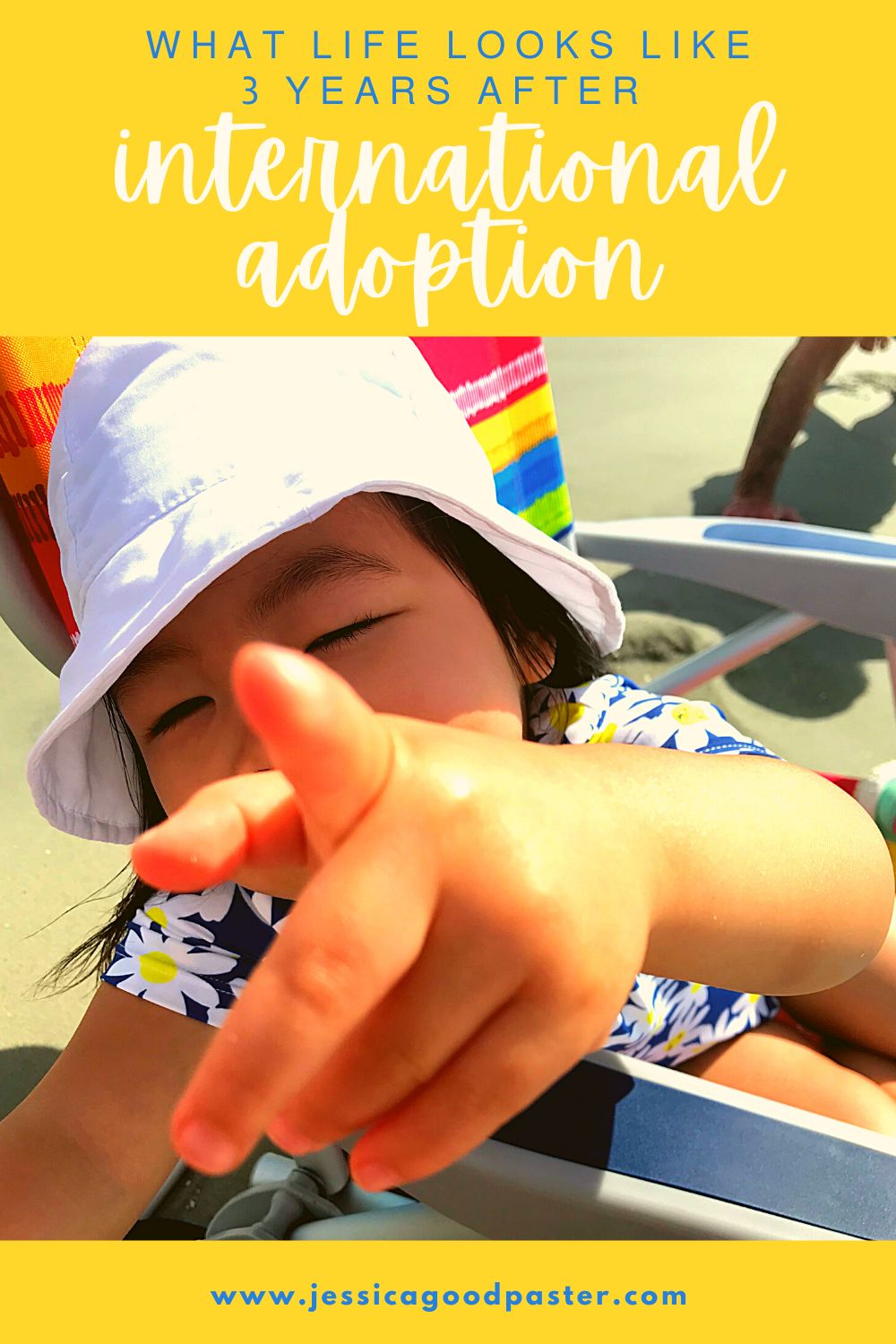
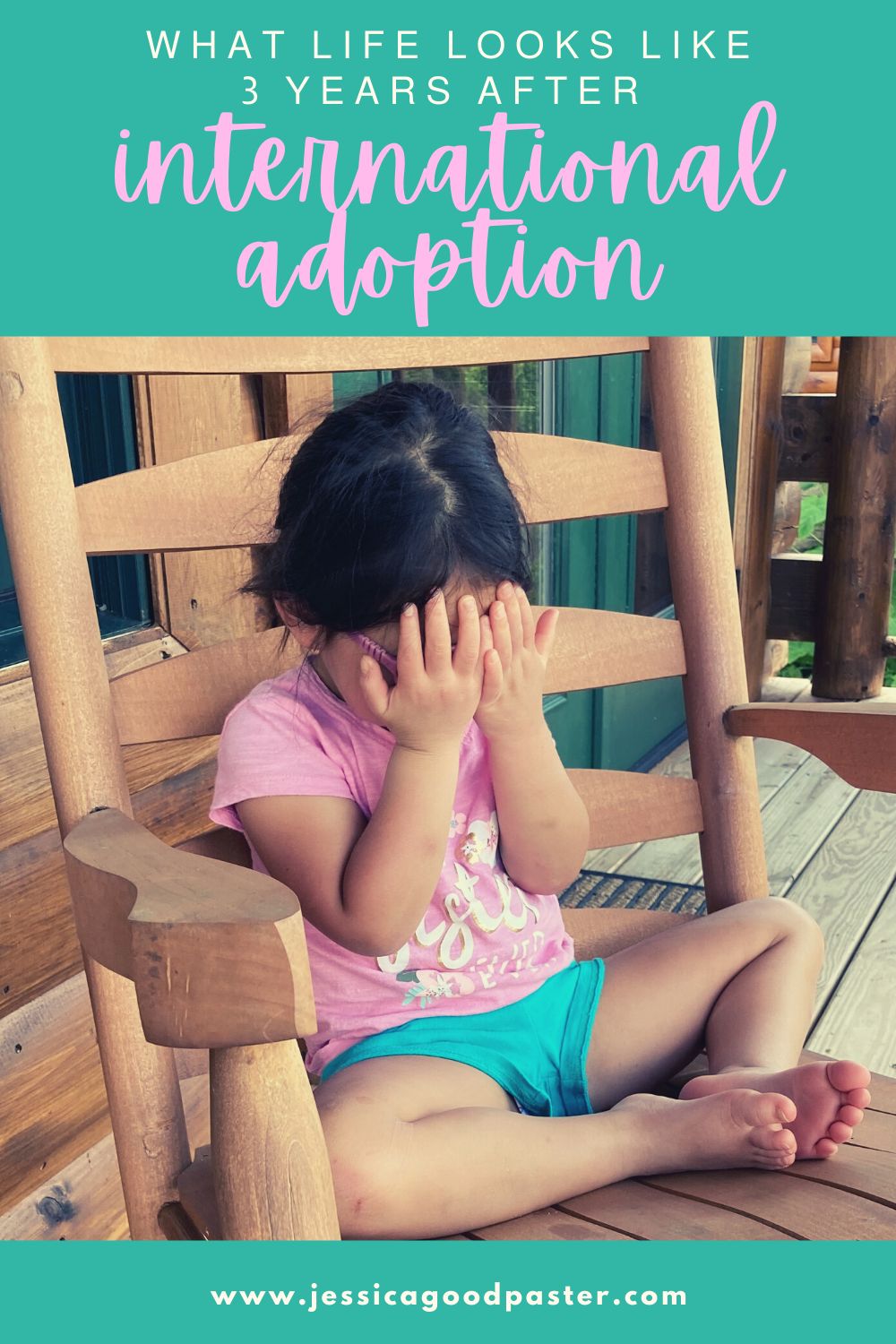

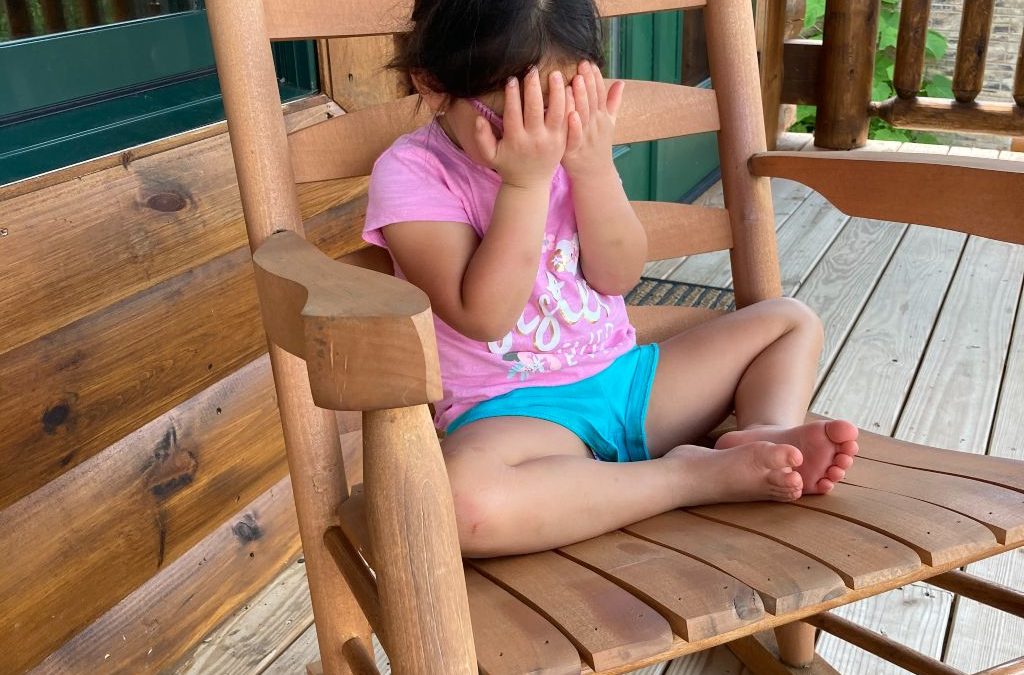
 Hi! I'm Jessica! I help people fund adoptions, navigate parenting, save money, and enjoy the good things in life.
Hi! I'm Jessica! I help people fund adoptions, navigate parenting, save money, and enjoy the good things in life. 
This is beautiful. Parenting (especially foster parenting) has tried me in so many ways. The trauma is so real. Thank you for the words of encouragement to give it all over to God each day.
Thanks for reading! I definitely couldn’t do this without God. Hope you and your family are doing well!